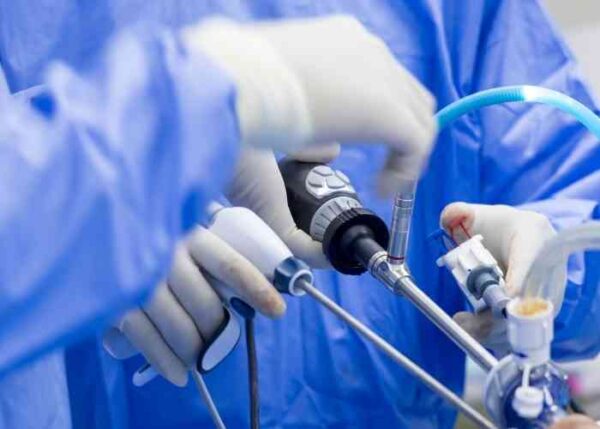Elbow Arthroscopy Doctor

Do you have osteoarthritis or degenerative joint disease? Are you unable to bend or straighten your elbow due to stiffness or catching? If so, you may have bone spurs or osteophytes in your elbow. Elbow bone spurs, also called osteophytes can be caused by osteoarthritis, overuse, or trauma. Bone spurs can be removed non-invasively, with arthroscopic surgery. Elbow arthroscopic surgeon, Doctor Riley J. Williams provides diagnosis as well as treatment options for patients in Manhattan, Brooklyn, New York City and surrounding areas who are experiencing symptoms associated with bone spurs or osteophytes in the elbow. Contact Dr. Williams’ team today!
What is elbow arthroscopy for the removal of bone spurs (osteophytes)?
Elbow arthroscopy is a minimally invasive manner by which the elbow joint can be accessed to perform surgical procedures. During elbow arthroscopy, long, thin medical tools are inserted into the elbow through small incisions. An arthroscope (small camera with a light) displays images of the injury onto a screen; this allows Dr. Williams to perform elbow procedures. One procedure that can be easily performed using arthroscopy is the removal of excess bony projections or bone spurs of the elbow. During elbow arthroscopy, Dr. Williams is able to remove excess bone (osteophytes) that sometimes develop in the elbow joint. Arthroscopic elbow surgery is done in an out-patient setting and with the use of regional anesthesia. Dr. Riley J. Williams, orthopedic elbow surgeon, serving Manhattan, Brooklyn, New York City, NY and surrounding areas, has extensive experience performing arthroscopic elbow surgery for the removal of bone spurs within the elbow.

What are bone spurs or osteophytes?
Osteophytes are bony protrusions that form on the ends of bones within joints. Bone spurs may form in the elbow due to osteoarthritis or degenerative joint disease. Osteoarthritis often occurs from overuse or trauma and can cause bone-on-bone friction within joints. Arthritic conditions can lead to the formation of osteophytes; these bony projections can cause pain, irritation and inhibit proper joint movement.
How is elbow arthroscopy for the removal of bone spurs performed?
Prior to surgery, the patient is lightly sedated and regional anesthesia is administered. The elbow is filled with fluid to allow for a better visualization of the inside of the elbow joint. Dr. Williams will use a long, narrow tube with lighting and a camera (arthroscope) to perform the surgery. Small incisions (portals) are about the elbow joint to gain access to the injured area. The arthroscope is inserted in one portal and portrays images of the bone spur onto a screen. Specialized instruments including shavers and osteotomes are used to remove the bone spurs. The joint is full visualized to rule out the presence of other pathologic conditions and loose bodies. The incisions are closed with absorbable sutures.
What are the risks of elbow arthroscopy for the removal of bone spurs?
Surgery, even minimally invasive operations with high success rates, such as elbow arthroscopy, can come with certain risks. It is possible to experience blood clots, infection, blood vessel damage, nerve damage and continued pain despite osteophyte removal. These types of events are very rare.
How long does it take to recover?
Patients typically go home within a few hours after surgery. A sling is recommended for 3-5 days after surgery. The elbow can be moved immediately following surgery. Physical therapy commences one week after surgery. Recovery takes approximately 6-8 weeks in most circumstances.
For additional resources on elbow arthroscopy for the removal of bone spurs or to have your elbow pain evaluated by an expert, please contact the office of Dr. Riley J. Williams, MD, orthopedic elbow surgeon serving Manhattan, Brooklyn, New York City, NY and surrounding areas.
